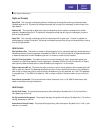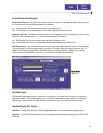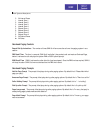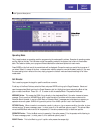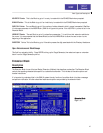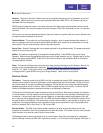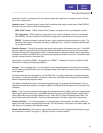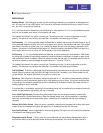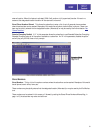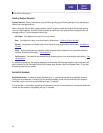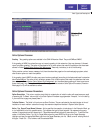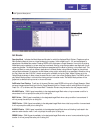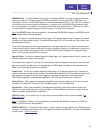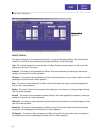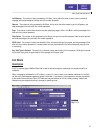
Authorizations
Blocking Allowed Call blocking will prevent any calls from being transferred to your extension or designated loca-
tion. You may think of it as a DND feature. It will override all call transfer instructions (follow me, forward, find me
etc.), but it will not override call screening.
A 'Y' in this field allows the Subscriber to set Call Blocking for their extension. An 'N' in this field disables the option
and it will not be spoken as an option in the extension user menu.
The 'enabled' field shows if this option is currently set. This setting must be 'Y' to allow a subscriber to set this
greeting. This option can only be set by the subscriber if the extension has Greeting type of "Basic."
Call Forwarding A 'Y' in this parameter allows the Subscriber to remotely redirect calls to another extension. An 'N'
in this parameter disables the option and it will not be spoken as an option in the extension user menu. The 'enabled'
field shows if this option is currently set. If you 'enable' this feature here you must also assign a destination to the
Remote - Fwd pointer in the Extension Block page 4 of 5. When this feature is activated the SVMi-8 will perform a
blind transfer and the control of the call will then be passed to the forward destination.
Call Screening A 'Y' in this parameter allows the Subscriber to set call screening for their extension. SVMi-8 asks
the calling party to speak his name before transferring the call and allows the called party to accept or reject the call
when answered. If the call is rejected, SVMi-8 will prompt the caller that their party is unavailable and allow them to
dial another extension or leave a message. Allowable inputs are 'Y' for yes or 'N' for no.
The 'enabled' field shows if this option is currently set. This setting must be 'Y' to allow a subscriber to set this
greeting. This option can only be set by the subscriber if the extension has Greeting type of "Basic".
Find Me Allowed Find Me is a feature that may be programmed by the subscriber as a high priority call connection
method. When this feature is set, the SVMi-8 will begin to dial the first 5 numbers in your stored number list until
you are reached. The 'enabled' field shows if this option is currently set.
Scheduling Each subscriber (if allowed by setting this parameter to 'Y'), may define a weekly availability schedule.
This schedule is used to automatically select a day or night greeting to play to callers. During the time a subscriber
is (according to this schedule) available the call will be transferred to the extension blocks dial number, and the no
answer greeting will play (if recorded).
If the subscriber is 'not available' (according to this schedule) the call will be transferred to the extension blocks dial
number, and the extension night greeting will play (if recorded).
Blocks (Auto Night Intercept) This feature only affects subscribers who are using an availability schedule (this
must be allowed by a System Administrator.) When the intercept feature is set, and the subscriber is unavailable,
callers will not be transferred to the subscriber station, instead they will immediately hear the night message (if
recorded).
Retrieve Public Caller Allowed When this option is available, a subscriber that accesses their mailbox while anoth-
er caller is leaving a message will be given the opportunity to immediately connect with that caller.
Busy Greeting Allowed Allows a subscriber to record a busy greeting This option can only be set by the subscriber
if the extension has Greeting type of "Basic".
Designated Location Allowed If this is set to Yes, then a subscriber can use the Access Manager Menu (digit 4
from the Main Menu) to set an alternate number where they can be reached. This number can be an internal or
Block Types and Descriptions
50



